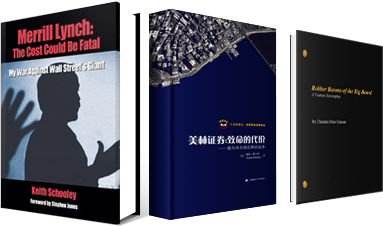![]() Shanghai University of Finance & Economics Press
Shanghai University of Finance & Economics Press
January 2010
Against the background of a weak oil industry, the author, Keith Schooley, turned to the financial industry to work for Merrill Lynch. As a fledgling financial consultant, he did well and had high hopes for a successful career. It didn’t take long, however, for Schooley to realize Merrill Lynch’s well-cultivated reputation was not based on what went on behind the facade. With a sense of hesitation and disappointment, Schooley, in the hope of setting things to rights, made several anonymous phone calls to the company hotline, and found the so-called confidentiality of complaints was just a camouflage, and the follow-up internal review was not thorough at all. As time went by, their conflict was intensified that eventually led him to a dismissal and a ten-year courtroom battle with the behemoth firm.
This is the story of David versus Goliath. The war involved a rookie employee and his opponent was one of the very largest, wealthiest, most successful and prominent brokerage houses in the US. In a disadvantaged position, how did Schooley respond and survive under high pressure?
…Keith could have kept silence on the internal misconducts and cover-ups and become a moneymaker with a happy and stable family. However, he obeyed his own conscience. He also could have given up the lawsuit in the face of powerful and aggressive Merrill Lynch to reach a settlement with the brokerage house, but he held out until the last. He is the real warrior.
But the story is greater than Keith’s. His experience clearly shows incompleteness and loopholes of the securities regulatory system of the US, as well as unequal and unfair arbitration proceedings. The real issue here is whether the American stock-buying public is prepared to continue to tolerate indefinitely having claims adjudged by arbitrators rather than jurors; whether they can continue to turn a blind eye to the regulatory gaps as well as regulators’ shield for securities firms; and whether they can with assurance put their money in the financial institutions. As the global economic growth has taken a hit as a result of the U.S. subprime mortgage crisis, the publication of the book has great and far-reaching significance. Who are responsible for financial bubbles? Can regulators effectively protect the interests of investors? You can find the answers in this book.
